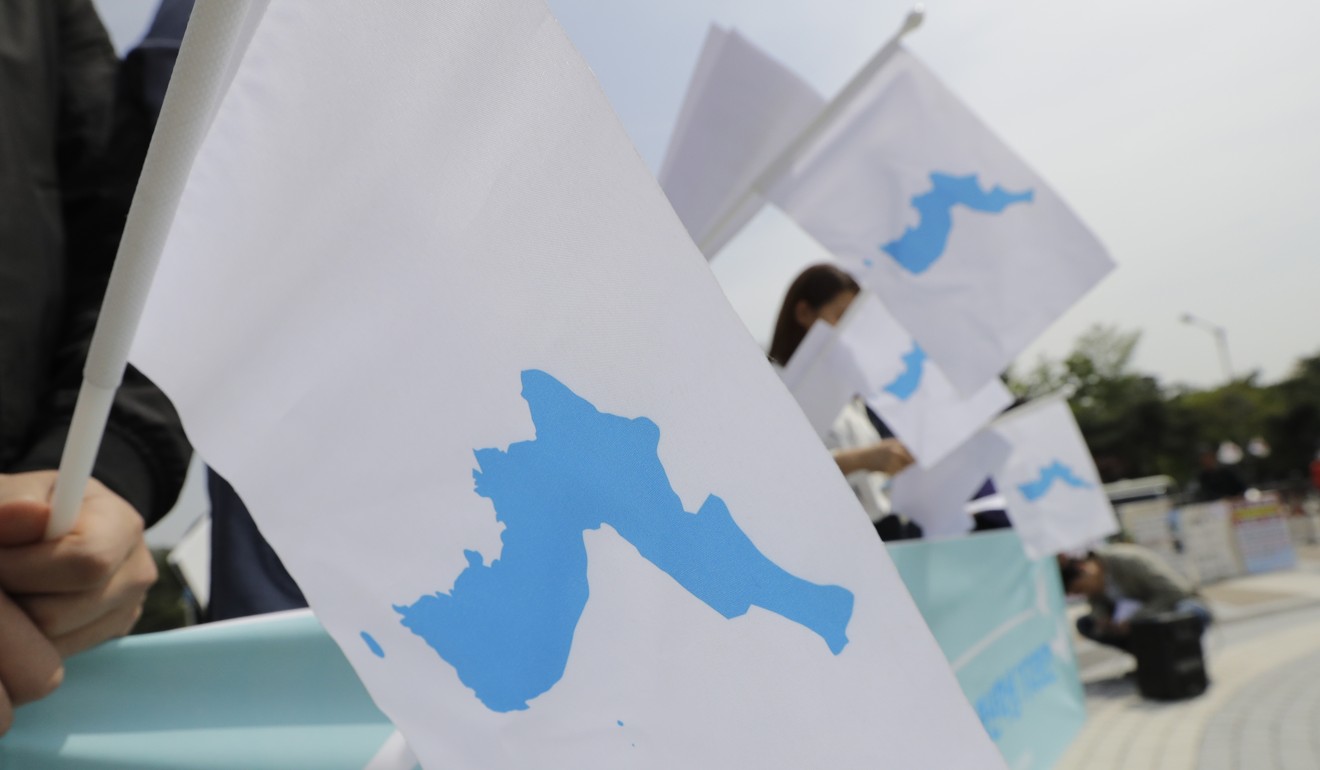
Kim meets Moon: for real peace on the peninsula, leave Korea to itself
The inter-Korea summit brings the greatest chance for peace since the 1953 armistice. Grasping it requires more than Pyongyang dismantling WMDs. It needs Koreans to realise it is they alone who can determine their destiny
Ever since Kim Jong-un’s firm but conciliatory New Year’s Day Address, developments on the Korean peninsula have raced ahead at a breakneck pace. This week it culminated at the Peace House on the southern side of the inter-Korean border village of Panmunjom as the two Koreas took a giant step towards winding down their cold war-era division and becoming the authors of their common 21st century destiny.
Hang on, what language is Kim Jong-un speaking?
The Panmunjom Declaration’s goal of declaring an end to the Korean war on this 65th anniversary year of the armistice and establishing a robust ‘peace regime’ is not a chimera; it is a brilliant and attainable goal. The international community stands today on the cusp of a golden opportunity to tease North Korea into the ‘sunshine’, end the inter-Korean civil war for good, denuclearise the peninsula and integrate Pyongyang within the international political and economic order. Not since the armistice in 1953 has such a profoundly hopeful moment presented itself on the peninsula.

But to take this to the logical conclusion of lasting peace would require two essential conditions. One, North Korea must completely, verifiably and irreversibly dismantle all its weapons of mass destruction. Pyongyang’s declared willingness to permanently forego this capability should not be dismissed summarily. Kim already enjoys the assured ability to inflict unacceptable damage on his adversary (the logic of possessing nuclear weapons) by way of possession of thousands of artillery tubes located within 50km or so of Seoul.
Abe’s nuclear disaster: why has Japan been shut out of North Korea?
An actual nuclear weapon mated to an intercontinental or intermediate range ballistic weapon is a leverageable asset that can be traded away for the right price – the full denuclearisation of the Korean peninsula, revocation of Washington’s extended deterrence guarantee to Seoul, security assurances by Washington and Beijing to the North Korean regime and state, conversion of the armistice agreement into a peace treaty, and normalised diplomatic relations with the United States. In this regard, Kim’s circumstances are markedly different from Saddam Hussein or Gaddafi’s.
WATCH: Kim and Moon plant ‘peace and prosperity’
Given successive past breaches of denuclearisation-related obligations however, economic inducements, security assurances, dismantlement of the Combined Forces Command machinery and a tripartite (US, China, North Korea) peace treaty must be backloaded until the dismantlement of Pyongyang’s capabilities regarding WMD and delivery vehicles is completed.
It’s no joke: the North Korean nuclear crisis could get Trump a Nobel Prize
The second condition for achieving peace is that the two Koreas must enjoy the strategic autonomy to take ownership of their fate and determine their future. It is for Koreans, and Koreans alone – not allies, adversaries or partners, to be the authors of their destiny, including the strategic orientation of the reunified and 80-million strong peninsula. All decisions that pertain to the disposition of existing conventional forces on the peninsula – be it the US troop presence, ballistic missile defence deployments, or security arrangements with third parties – must be made on the basis of a mutual consensus by both Koreas. The 38th parallel, and the peninsula more broadly, must cease to be the trip wire of a Northeast Asian ideological or values-based geopolitical contest and revert to its conventional role (with a 21st century twist) of rendering “friendship to the great [powers], and service to the near [neighbours].”
As a first step to give meaning to their mutual non-aggression pledges and breathe life into strategic inter-Korean cooperative projects, Seoul and Pyongyang should designate a joint fishing zone in the Yellow Sea that softens – and ultimately eliminates – the need for the Northern Limit Line. The line, a unilaterally promulgated and faultily drawn sea-based extension of the military demarcation line, cuts deeply into Pyongyang’s maritime entitlements and cannot, as per the Law of the Sea, be sustained as a fair or equitable maritime boundary. That the Ongjin peninsula (which is enveloped by the Northern Limit Line) was the locus of initial skirmishes that led to the full-scale outbreak of war on June 25, 1950, makes it all the more fitting that the North and South galvanise the commencement of their new historical moment here.

The Korean war was the defining event in the international relations of the Asia-Pacific during the second half of the 20th century. After the outbreak of war in June 1950, the US reversed its non-interventionist stance and became a participant in four Asian civil wars (on the peninsula, in the Taiwan Strait, in Indochina and in the Philippines). Within twelve months, Japan’s Police Reserve Force and Maritime Safety Force, which was to form the nucleus for all subsequent rearmament, was created. By September 1951, an unrepresentative peace treaty that departed in letter and spirit from the wartime Cairo and Potsdam declarations and which would architecturally lock in the unresolved territorial claims in the Asia-Pacific, was signed in San Francisco.
With the two Koreas having come full circle in Panmunjom almost seven decades later, it is time to firmly consign that bitter history to the past. ■
Sourabh Gupta is a senior fellow at the Institute for China-America Studies in Washington

